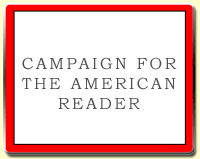 Stephen Hunter retired in 2008 as chief film critic of the Washington Post.
Stephen Hunter retired in 2008 as chief film critic of the Washington Post.His most recent novel is I, Sniper (Simon & Schuster, 2009).
For the Wall Street Journal, he named a five best list of books on soldiers at war.
One book on the list:
The Face of Battle by John Keegan Viking, 1976Read about the other books on the list.
John Keegan is by no means the first historian to contemplate combat from eyeball range, but he has been the most eloquent to propose that battle accounts should involvemore than describing the movement of military units as viewed from an imaginary satellite far above the smoke and blood. Yes, it's important to know that, say, a unit called Able/3/4 moved up Hill 271 at 0350 and didn't take possession from the 2/2 SS Panzergrenadiers/Totenkopf until 0530, but Keegan thinks that the focus should instead be on the guys of Able Company as they climb the incline against heavy German fire. In "The Face of Battle," written early in his remarkable career, Keegan applies his close-up history writing to three world-changing battles—Agincourt in 1415, Waterloo in 1815 and the Somme in 1916. Infusing his narrative with archaeology, anthropology and the utter melancholy of loss and permanent injury, he produced a model for all who followed.
The Face of Battle is one of Thomas C. Schelling's most influential books.
Friend of the Blog Kurt van der Walde once alerted me to the closing lines of the acknowledgments of the book where Keegan reveals why he did not dedicate the book to his "wife Susanne: ...were the title and the subject of this book not so inappropriate, I would have dedicated it to her, for all she has done."
--Marshal Zeringue



